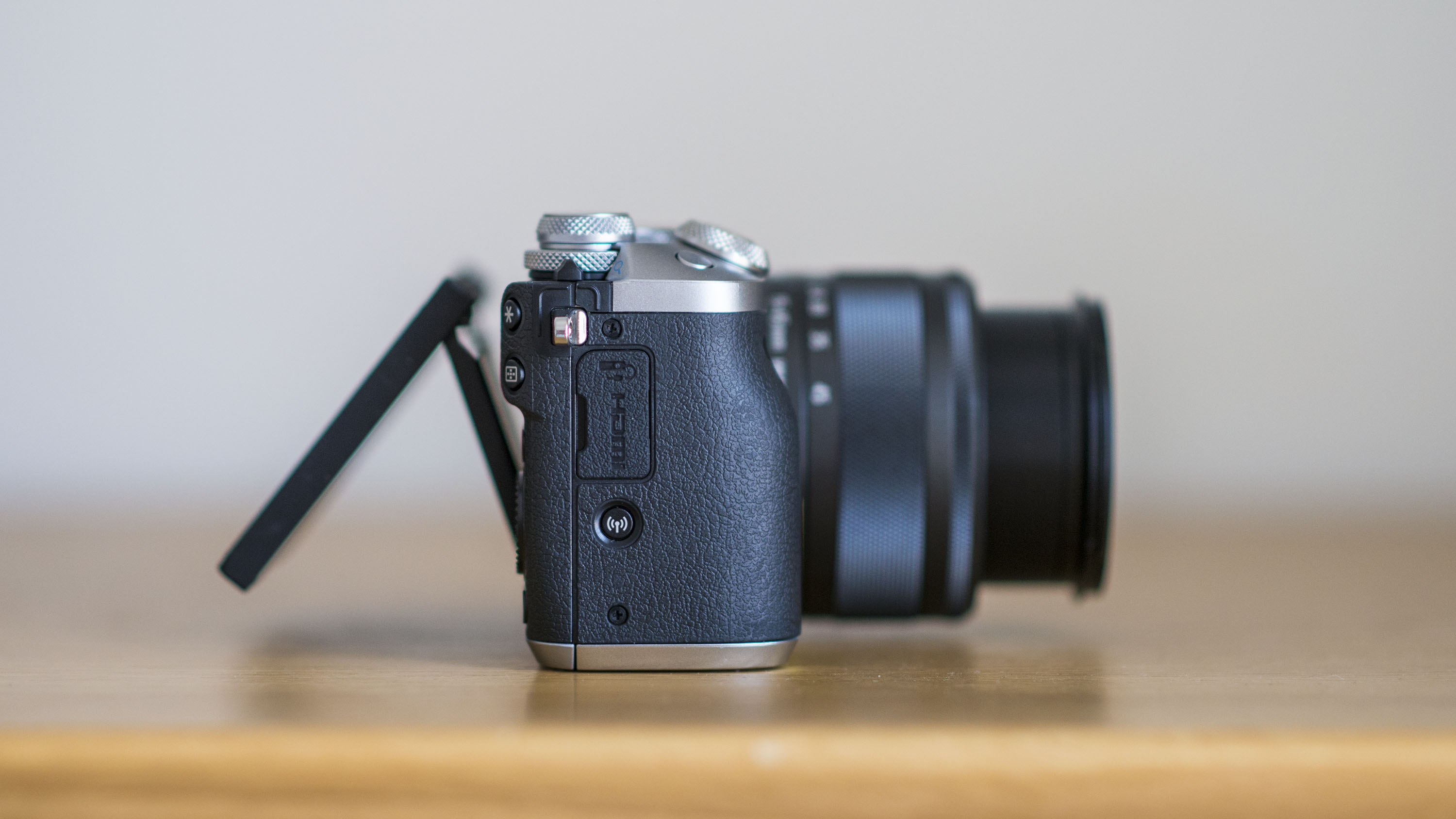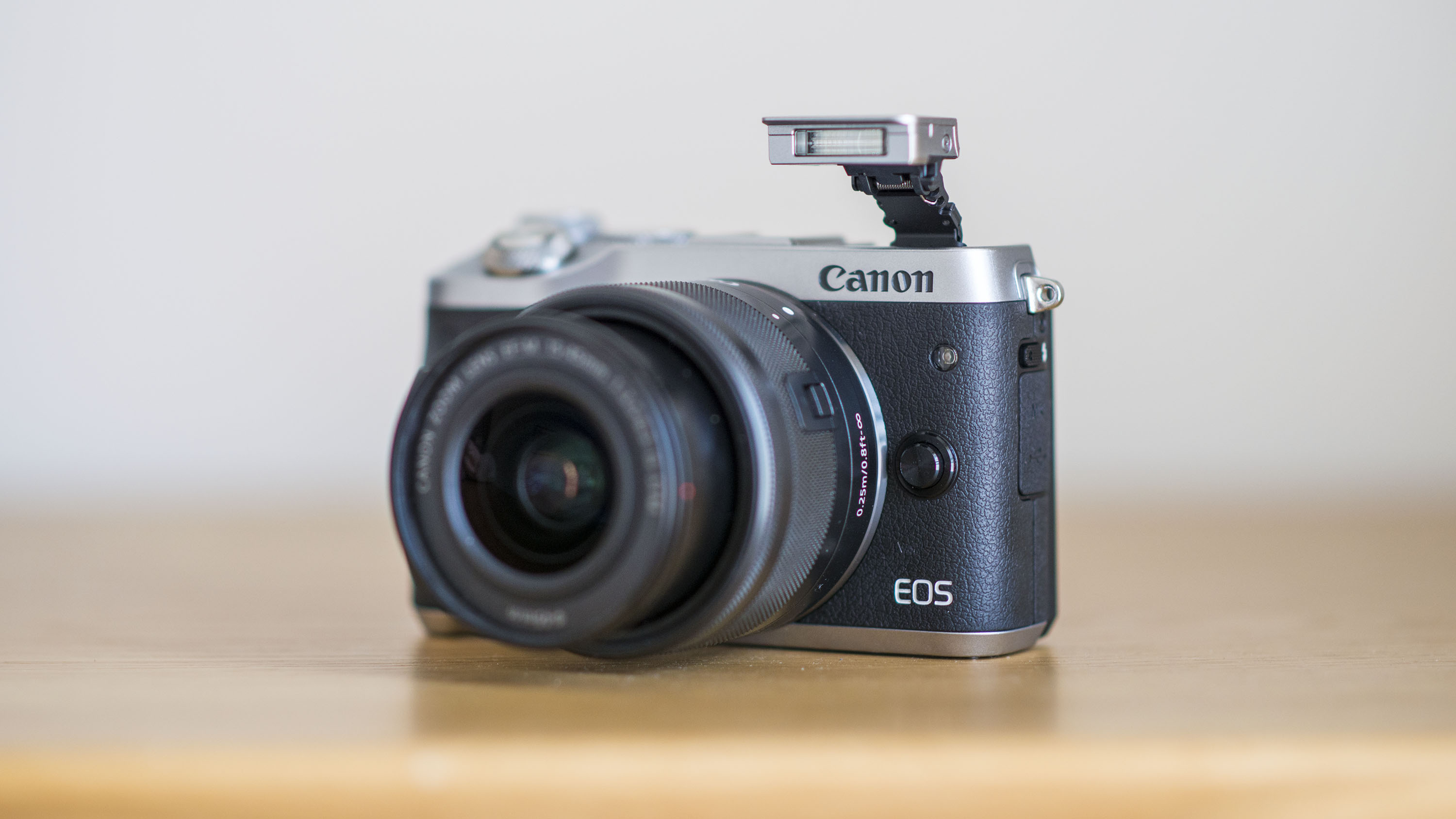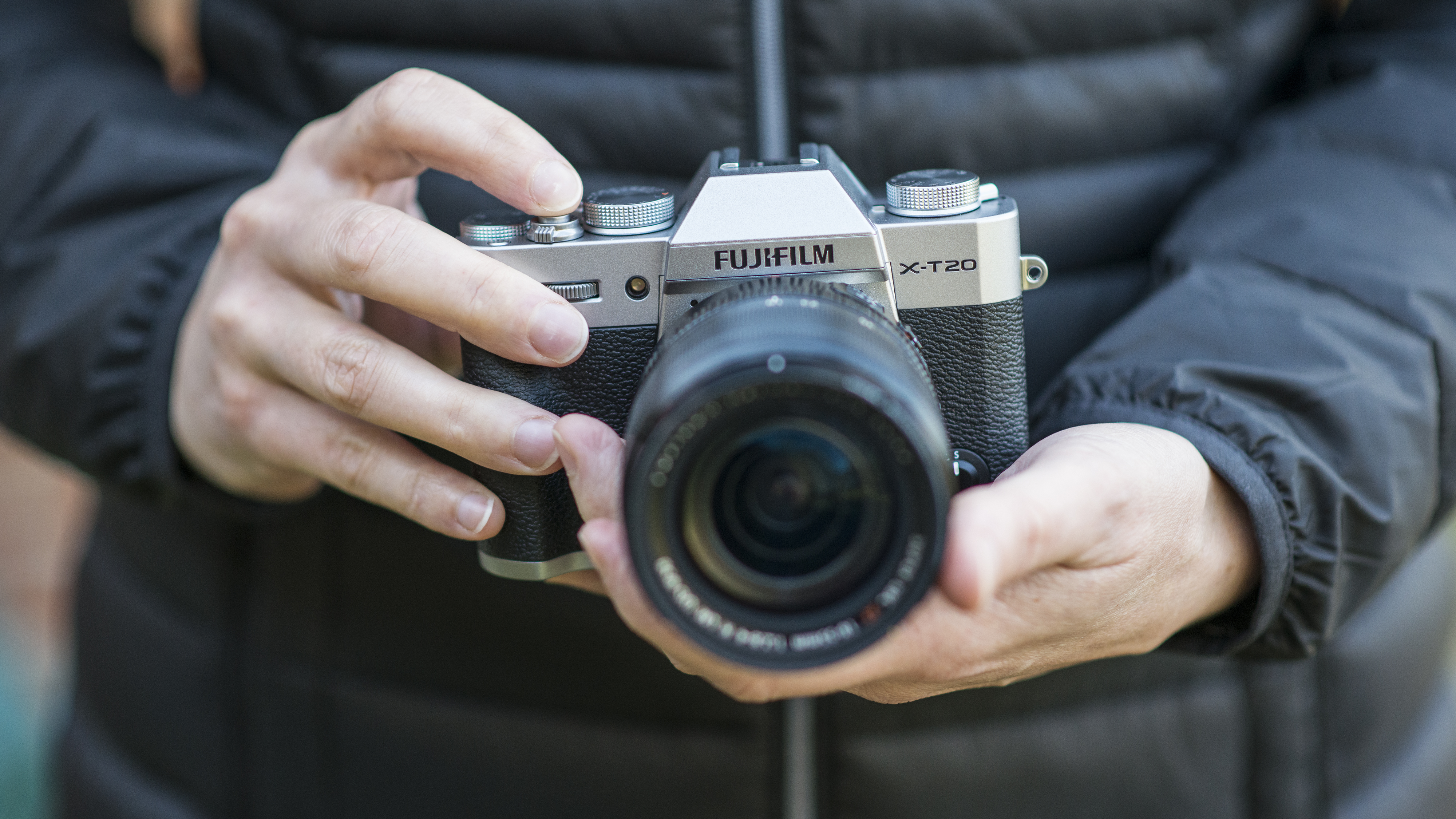The successor to 2015’s EOS M3, Canon’s EOS M6 arrives with a handful of features inherited from its relatively new big brother, the flagship EOS M5. The two share similar intentions and are aimed towards a similar kind of user, but with a slightly pared-down feature set, the EOS M6 arrives with a more appealing price tag.
Canon may have got off to a slow start with its mirrorless line, but it's made up for this in recent years. It now has four models in its EOS M portfolio, covering the full spectrum from beginner to enthusiast. This model in particular appears to be well suited to anyone who cut their teeth on the original EOS M or EOS M10.
That said, it’s launched into a very competitive market. Price-wise it not only goes up against a slew of well-regarded models from other manufacturers, but also older, more advanced cameras whose age has allowed them to fall to temptingly low prices.
The former camp includes Fujifilm’s X-T20, Sony’s A6300 and Panasonic’s Lumix GX8, while in the latter there’s the Olympus OM-D E-M5 Mark II and Fujifilm X-T1 Graphite Silver among others. You can even buy a full-frame Sony A7 kit for just a little bit more.
Features
- APS-C CMOS Sensor, 24.2MP
- 3.0-inch tilt-angle touchscreen, 1,040,000 dots
- 1080p video capture
Like the EOS M5, the EOS M6 has been furnished with a 24.2MP sensor designed with Canon’s Dual Pixel CMOS AF technology.
This allows the camera to perform full-time phase-detect AF to help keep focusing fast, as well as nice and smooth when recording video, and is one of the main changes from the older 24.2MP sensor inside the EOS M3, which offered Canon’s alternative Hybrid CMOS AF III system.

The sensor works with Canon’s DIGIC 7 processing engine, which is said to provide better subject detection and tracking over the previous DIGIC 6 engine. Another thing it allows is 9fps burst shooting, which drops to 7fps with continuous autofocus enabled, and the camera joins many other recent EOS models in allowing raw files to be processed in camera post-capture.

The EOS M6’s LCD screen is competitively specced, measuring three inches in size and bearing 1.04 million dots. It’s touch-sensitive and tilts downwards over a 45-degree angle, although you can also pull it right round to face the front. Unlike the flagship EOS M5, the EOS M6 doesn't incorporate an electronic viewfinder, although you can use one of two external models – either the tilting EVF-DC1 or the newer, fixed EVF-DC2 – by slipping them into the hot shoe.

While a number of rivals are offering 4K video recording at this level, Canon has opted for Full HD video at frame rates up to 60p instead. This may disappoint some, although the presence of Canon's Dual Pixel CMOS AF system and a touchscreen that can be used to adjust focus during recording, together with the further option of using an external microphone, mean it’s still worth considering if video is your thing.

The fact that you can flip the LCD all the way around to face the front also means this camera is likely to appeal to vloggers, while the inclusion of five-axis digital image stabilization when recording video should help keep things a little steadier if you tend to shoot footage while moving around.
Image stabilization for stills is not provided through the body, but via compatible lenses equipped with their own stabilization systems. If, however, such a lens is used when recording video, the two systems combine to provide a Combination IS system.
If there’s one area where the EOS M6 shines it’s connectivity options. Wi-Fi, NFC and Bluetooth are all present, with the latter meaning you can keep the camera hooked up to your smartphone at all times.
Canon claims you can get around 295 frames per charge from the EOS M, regardless of whether you’re using the LCD screen or a separate viewfinder. You can, however, boost this figure to around 425 frames by enabling the Eco mode in the menu system – when you do so the camera's screen will darken and turn off more quickly than normal when the camera isn't being used.
Everything is recorded to SD, SDHC or SDXC media, with support for the UHS-I standard.
Build and handling
- Five separate physical dials
- Integrated flash and hot shoe
- Weighs 390g
In terms of the Canon EOS M6's design, there have been no great departures from the EOS M3 – and that’s no bad thing. With a sculpted grip and a range of buttons that can be extensively customized, there’s a great deal to love.
There’s been some reshuffling of controls, although the only difference of any significance is the addition of a further dial on the top plate. This now means the top plate offers two command dials, together with mode and exposure compensation dials, which is in addition to a further control dial on the back of the camera.

This brings to total number of dials to five, which is excellent for those who prefer to access things manually rather than via menus and touchscreens – though you’ll no doubt opt for touchscreen operation at many points when you see how extensively this can be used to operate the camera.
Thanks to the design of the grip the M6 generally feels good in the hands, although those with larger hands may find it a little cramped, and prefer a model with a grip more akin to that found on a DSLR. The eyelet for the camera strap also interferes with holding the camera comfortably, but if you tend to keep your camera hanging from your neck you won't mind this.

The Canon EOS M6 weighs just 520g with its memory card, battery and EF-M 15-45mm f/3.5-6.3 IS STM kit lens in place, and, thanks to the collapsible construction of the lens, it’s more compact than the average compact system camera at this level.
While the focal range of the kit lens in 35mm terms equates to 24-72mm – that wide–angle figure being very compared to some other kit lenses – the fact that the lens only offers a maximum aperture of f/6.3 at its telephoto end is somewhat disappointing.
Unlike some of its rivals, the M6 appears to use polycarbonate for its top and bottom plates, although the four dials on the top plate are made of metal, and the bulk of the body is finished with a smart rubber that feels as good as it looks. It’s a shame not to see more robust magnesium-alloy paneling, but attention to detail is still strong and no corners have been cut.
Autofocus
- 49-point AF system
- Dual Pixel CMOS AF
- Focus peaking with color and peaking level control
The camera’s sensor uses 49 areas to autofocus as standard, although you can also manually shift a point around all but the peripheries of the frame. You can also use the touchscreen to tap the subject on which you want the camera to focus, and employ the Smooth zone AF option to keep track of erratically moving subjects within a small portion of the frame.

Autofocus performance is generally sound. In good light the Canon EOS M6 is able to bring subjects to focus in good time; perhaps not quite as rapidly as some rivals, but certainly fast enough for static subjects. With its EF-M 15-45mm f/3.5-6.3 IS STM and EF-M 18-150mm f/3.5-6.3 IS STM lenses, it does this practically silently too.
Thanks to its Dual Pixel CMOS AF system, the M6 is generally very capable of keeping track of a moving subject when set to focus continuously, although as with any such system, the extent to which it manages this is heavily dependent on what you're trying to track. For example, a runner wearing clothing that contrasted well with their background proved to be no issue for the system, but it wasn't quite as reliable when focused on a dog among grass that was only occupying a small portion of the frame.
When using manual focus you can call upon focus peaking, with red, yellow and blue colours on offer, together with high and low peaking levels to choose from. The peaking outline isn’t quite as thick as on some other models, although this is arguably a good thing as it obscures less of the subject’s details, thus helping with accuracy.
Performance
- 7fps burst shooting
- 295-shot battery life
- Wi-Fi, NFC and Bluetooth
There’s only the briefest of delays after you flick the power switch, and if you already have an AF point selected the Canon EOS M6 generally finds focus very quickly. If you tend to leave the camera’s autofocus system on its more automated default option it may take a whisker longer to identify the scene, but it’s certainly still speedy enough for all but the most critical situations.
With a fast memory card the camera manages 18 simultaneous raw+JPEG frames before slowing down, and 28 JPEGs when tested in the same way – perfectly respectable figures for such a model. It takes around six seconds to clear the former and less than two for the latter, and while the camera locks up as this happens – which means you can't enter the menus – this is potentially only an issue in practice if you're using a slower card, which would lengthen these times.

You're able to browse the menus and captured images without any lagging, and even when zooming into images there’s virtually no lag as you use gestures to zoom and swipe around, while if you make use of the freely rotating rear control dial you can zip through a series of images at great speed.
Thanks to the combination of physical controls, the touchscreen and the camera’s general responsiveness, once you get used to the layout of controls and functions you can operate the EOS M6 very fluidly. The fact that you can customize so many of the camera’s controls, and place so much within a custom My Menu, only makes it better.

The EOS M6's LCD screen responds very well to touch, and while some of the virtual controls are on the small side, you’re unlikely to want to control everything via the screen (the main menu, for example). Should you find the screen isn't bright enough outdoors you can easily boost its brightness through the menus, although one strange issue is that the top plate renders some of the screen’s touch controls inaccessible when the screen is flipped through a 180-degree angle.
Another oddity is the lack of a selectable electronic shutter, a feature that’s pretty much standard on such models. Its absence means you can't shoot as discreetly as you can on rival models, as there’s essential no way to silence the M6's mechanical shutter (which is a shame, given the quiet AF performance from the two aforementioned lenses). This also means you can't access shutter speeds faster than the 1/4000 sec limit imposed by the mechanical shutter, although this is arguably less of a concern here, when you consider the lack of wide-aperture lenses in the current EOS M portfolio.
Image quality
- Four metering patterns
- In-camera raw processing
- 5-axis IS during video recording
The Canon EOS M6 offers evaluative, centre-weighted, partial and spot metering options, and left to the default first of those settings it manages to cope well across both balanced and tricky lighting conditions. It’s a good idea to keep the Peripheral Illumination correction option enabled, as this helps to lift the slight darkness that can form around the peripheries of the frame, and the Auto Lighting Optmizer also proves useful in high-contrast situations.

The default Picture Style is Standard, although a comparison with the Auto Picture Style shows the latter to do a much better job of reproducing most colors. Greens and blues in particular appear somewhat undersaturated on the Standard option, so Auto is perhaps a better choice if you’re shooting outdoors, particularly if the scene contains skies and foliage.

The auto white balance system appears to be nice and accurate under both natural and artificial sources, and even when these are mixed, although it can remove some of the warmth of incandescent sources. Many recent cameras feature an option that allows the user to keep white balance on Auto while preserving this warmth, but it's not present here. Still, there is enough control through the various options to allow for all the tweaking you need.

One of the strengths of the Canon EOS M6 is just how much you can do with images post capture. In-camera raw processing allows you to edit files and save them as new JPEGs, and while it would be good to see this functionality fleshed out and expanded, the fact that you can control everything through the touchscreen makes the process very quick and easy. On top of this, options to resize images, adjust their aspect ratio and crop finely means you can achieve a fair bit without needing to go anywhere near a computer.
While the M6’s video capabilities fall short of delivering the same kind of detail and clarity as some rivals, it records perfectly decent Full HD video. The ability to use the touchscreen to shift focus between different parts of the scene is particularly useful, with the Dual Pixel CMOS AF system moving smoothly and discreetly as you do this.
Verdict
In isolation, the Canon EOS M6 has plenty going for it. It’s small and light, responsive in use and blessed with a focusing system that’s very capable across both stills and video capture.
Image quality is decent straight out of the box, and once you acquaint yourself with the camera’s behaviour you can improve on this. There’s also plenty of physical control on offer, and plenty of ways in which you can customize the controls to better serve your shooting, while the many post-capture options that are available help you output your images easily and quickly.
Still, it’s difficult to identify exactly what it the M6 offers that places it ahead of its very capable rivals.
With no 4K video, no viewfinder, no electronic shutter and a build quality that falls short of what's offered elsewhere at this price point, the M6 has a hard time justifying its asking price – and when you add in the separate viewfinder, this comes to a figure not far off the cost of the viewfinder-equipped EOS M5, which makes you wonder why you’d want to opt for the separate combination when you can just get everything in one.
Competition

Fujifilm X-T20
With key functionality inherited from the co-flagship X-T2 and packed inside a handsome, robust body, the X-T20 has garnered a lot of attention since it landed last year. Over the EOS M6 it boasts 4K video recording, an integrated electronic viewfinder and an AF system that can be expanded from 91 AF points up to 325. Its native lens range is also broader, although its screen isn't as flexible as the EOS M6’s, and there's no NFC or Bluetooth.
Read the full review: Fujifilm X-T20

Panasonic Lumix GX8
Not the newest Lumix but perhaps the closest to the EOS M6 in terms of form, price and target audience, the GX8 has the advantages of a dust- and splash-proof body, an integrated viewfinder, 4K video recording and an electronic shutter over the EOS M6. While its 20.3MP sensor may seem less capable on the spec sheet, the fact that it manages to offer what it does at a significantly cheaper asking price than the M6 makes it hugely appealing, and the fact that it's compatible with a far broader range of native lenses sweetens the deal even further.
Read the full review: Panasonic Lumix GX8
Sony Alpha A6300

Key advantages offered by the 24.3MP A6300 include 4K video, a much more refined AF system with a staggering 425 phase-detect AF points, a built-in electronic viewfinder and a weather-sealed body. It doesn't completely walk all over the EOS M6, though; its display is smaller, less flexible and not touch-sensitive, while Bluetooth is absent.
Read the full review: Sony Alpha A6300